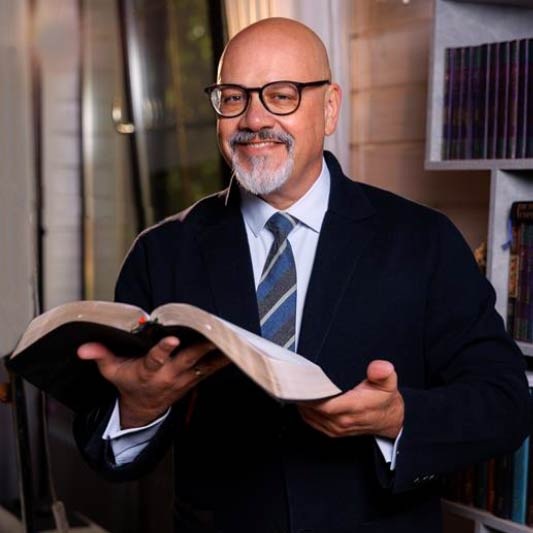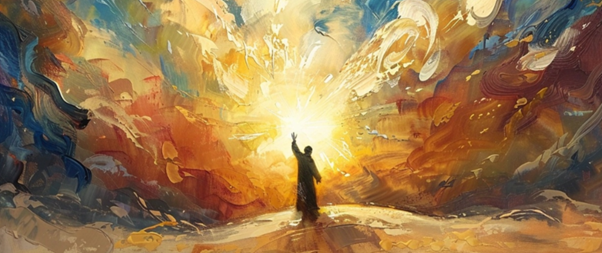The question of whether Mary, the mother of Jesus, can be understood as a “New Rachel” in Christian theology, particularly within a Catholic framework, is both intriguing and complex. This idea, prominently explored by Catholic scholar Brant Pitre in his book Jesus and the Jewish Roots of Mary (2018), seeks to draw a parallel between the Jewish matriarch Rachel and Mary, the mother of Jesus, by situating Mary within the Jewish concept of the “merits of the fathers” and Rachel’s role as a powerful intercessor for Israel. While Pitre’s argument is compelling and rooted in a deep engagement with Jewish tradition, it raises methodological and interpretive challenges that warrant scrutiny. This essay will look at the strengths and weaknesses of Pitre’s argument, discussing the Jewish idea of the “merits of the fathers,” Rachel’s suffering and her role as a helper in Jewish tradition, and the links Pitre makes between Rachel and Mary, while also considering whether the New Testament clearly supports this comparison.
The Merits of the Fathers and Mothers in Jewish Tradition
Central to understanding the potential connection between Rachel and Mary is the Jewish concept of the “merits of the fathers” (zechut avot), which refers to the righteous deeds of Israel’s patriarchs—Abraham, Isaac, and Jacob—that accrue spiritual benefits for their descendants. This idea is foundational to Jewish covenantal theology, emphasizing that the faithfulness of the patriarchs continues to influence God’s relationship with Israel. For instance, in Genesis 26:24, God assures Isaac, “I am the God of your father Abraham; Do not fear, for I am with you. I will bless you and multiply your descendants, for the sake of My servant Abraham.” This promise underscores the enduring impact of Abraham’s obedience, particularly his willingness to sacrifice Isaac (Genesis 22), which Jewish tradition regards as the ultimate act of faith.
The concept is also enshrined in Jewish liturgy, notably in the Amida, the central prayer of Jewish worship, which begins by invoking the “God of Abraham, God of Isaac, and God of Jacob” and acknowledges God’s remembrance of the “pious faithfulness of the fathers” who bring a redeemer to their descendants. This liturgical emphasis demonstrates the covenantal importance of the patriarchs’ merits. Interestingly, the Apostle Paul echoes this idea in Romans 11:28, stating that even Jews who reject Jesus remain “beloved on account of the fathers,” illustrating the concept’s presence in early Christian thought.
While the “merits of the fathers” traditionally focuses on male patriarchs, Jewish tradition also elevates certain matriarchs, particularly Rachel, as figures whose suffering and righteousness contribute to Israel’s spiritual legacy. Rachel’s life, marked by profound tragedy and self-sacrifice, positions her as a female counterpart to the patriarchs, whose merits are invoked in intercessory roles. This concept sets the stage for exploring whether Mary, in Christian theology, can be considered a continuation or fulfillment of Rachel’s role.
Rachel’s Suffering and Intercessory Role
Rachel’s life, as depicted in the Hebrew Bible, is a tapestry of sorrow and resilience. Her story begins with her betrothal to Jacob, who labors seven years to marry her, only to be deceived by her father, Laban, who substitutes Leah on their wedding night (Genesis 29). Rachel’s emotional suffering intensifies due to this betrayal and her prolonged barrenness while Leah bears children. When Rachel finally gives birth to Joseph, his life becomes another source of anguish, as he is sold into slavery by his brothers (Genesis 37). The ambiguity surrounding Rachel’s death—whether before or after Joseph’s enslavement—further complicates her narrative. Genesis 35:19 records her death during Benjamin’s birth, yet Genesis 37:10 suggests she may have been alive during Joseph’s dreams, raising questions about the chronological order of these events.
Rachel’s suffering reaches its theological apex in Jeremiah 31:15, where she is depicted as weeping for Israel’s exiles: “A voice is heard in Ramah, lamenting and bitter weeping. Rachel is weeping for her children; she refuses to be comforted for her children because they are no more.” This verse establishes Rachel as a maternal intercessor whose grief transcends her earthly life, and it is paired with Genesis 22 in the Jewish liturgical cycle for Rosh Hashanah. Rabbinic tradition amplifies this role, as seen in Genesis Rabba (82:10), where Jacob buries Rachel near Bethlehem so her prayers might intercede for future exiles. In Lamentations Rabba (Petichta 24), Rachel’s intercession surpasses that of Abraham, Isaac, Jacob, and Moses, whose pleas for Israel’s restoration are rejected by God. Rachel’s appeal, grounded in her personal sacrifice—overcoming jealousy to accept Leah—moves God to promise, “For you, Rachel, I will restore Israel to its place” (Jeremiah 31:15–16). This midrashic portrayal elevates Rachel as the supreme intercessor, whose merits rival or exceed those of the patriarchs.
Mary as the New Rachel: Pitre’s Argument
Brant Pitre argues that Mary, the mother of Jesus, embodies a “New Rachel” in the New Testament, particularly in the Gospel of Matthew. He identifies three key connections: first, the massacre of the innocents in Bethlehem (Matthew 2:16–18) occurs near Rachel’s tomb, linking the geographical context of Rachel’s weeping to Mary’s presence; second, Matthew explicitly quotes Jeremiah 31:15 to describe the mourning for the slaughtered children, suggesting a typological connection; and third, both Rachel and Mary suffer due to the divine purpose of their sons, Joseph and Jesus. Pitre draws on Jewish scholars like David Flusser, who sees Rachel as a symbol of the suffering Jewish mother, mirrored in Mary’s anguish over Jesus’ persecution, and Jacob Neusner, who acknowledges a Catholic Mary as a “Christian Rachel” whose prayers resonate with divine compassion.
Pitre’s argument is rooted in the Catholic tradition of Marian theology, which views Mary as an intercessor and co-redemptrix, roles that parallel Rachel’s in Jewish tradition. The massacre of the innocents, ordered by Herod to eliminate the perceived threat of a new “king of the Jews” born in Bethlehem (Matthew 2:1–6), evokes Rachel’s weeping for her children. Mary’s flight to Egypt with Joseph and Jesus (Matthew 2:13–15) further aligns her with Rachel’s suffering, as both mothers endure pain tied to their sons’ destinies. Pitre suggests that Matthew’s citation of Jeremiah 31:15 intentionally frames Mary as a new Rachel, whose maternal sorrow and intercessory role fulfill Jewish expectations of a matriarchal figure advocating for God’s people.
A Critical Perspective
While Pitre’s thesis is evocative, it faces significant challenges when scrutinized against the historical and textual evidence. The primary issue lies in the dating and context of the Jewish sources Pitre cites. Many of the rabbinic texts, such as Genesis Rabba and Lamentations Rabba, were compiled centuries after the New Testament, raising questions about their relevance for interpreting first-century Christian texts like Matthew’s Gospel. These later Jewish traditions may reflect a response to Christian Marian theology rather than an independent framework that Matthew drew upon. For instance, the elevation of Rachel as a supreme intercessor in Lamentations Rabba could be a Jewish counterpoint to the growing veneration of Mary in early Christianity, which developed significantly by the third and fourth centuries.
Moreover, Matthew 2:17–18 cites Jeremiah 31:15 to describe the mourning for the Bethlehem children, not explicitly to characterize Mary. The text focuses on Rachel’s weeping as a symbol of collective Jewish sorrow, not as a direct typology for Mary. While the geographical proximity of Bethlehem to Rachel’s tomb and the parallel of maternal suffering are suggestive, they do not conclusively establish Mary as a “New Rachel” within the text itself. The Gospel does not explicitly depict Mary interceding or weeping in this context, unlike Rachel’s active role in Jeremiah and later midrashim.
To illustrate the methodological challenge, consider the parallel case of the “golden rule” attributed to Jesus (Matthew 7:12) and Rabbi Hillel (Shabbat 31a). While both articulate a similar principle—Jesus positively (“Do to others what you wish they would do to you”) and Hillel negatively (“What is hateful to you, do not do to your neighbor”)—the Talmudic attribution to Hillel appears centuries after Jesus. This raises the possibility that Jewish tradition absorbed or reattributed Christian teachings, or that both drew independently from shared Jewish scriptures. Similarly, the parallels between Rachel and Mary may reflect a later convergence of Jewish and Christian theologizing rather than a direct typological intent in Matthew’s Gospel.
Conclusion
The question of whether Mary is a “New Rachel” is a fascinating exploration of Jewish and Christian theological intersections. Brant Pitre’s argument, supported by scholars like Flusser and Neusner, highlights compelling parallels: Rachel and Mary’s shared suffering, their sons’ redemptive roles, and the geographical and scriptural connections in Matthew 2. However, the reliance on late Jewish sources and the lack of explicit textual evidence in Matthew’s Gospel caution against definitive conclusions. While Rachel’s role as an intercessor in Jewish tradition offers a rich framework for understanding Mary’s significance in Catholic theology, the connection remains speculative without earlier or contemporaneous Jewish sources to confirm Matthew’s intent. The beauty of this comparison lies in its potential to bridge Jewish and Christian understandings of maternal intercession, but it should be approached as a possible, rather than definitive, typology. Further exploration of first-century Jewish texts and the development of early Christian Mariology may yet clarify whether Mary truly emerges as a “New Rachel” in the New Testament era. For now, the connection remains an open question, inviting readers to weigh the evidence and decide for themselves. To see other articles in this series, click here.






Yeshua is the door! No one comes to the Father except through the Son. This excludes Miriam (Mary) as intercessor. She also needs her Son as Mediator.
It does not exclude her as a powerful prayer warrior, does it?